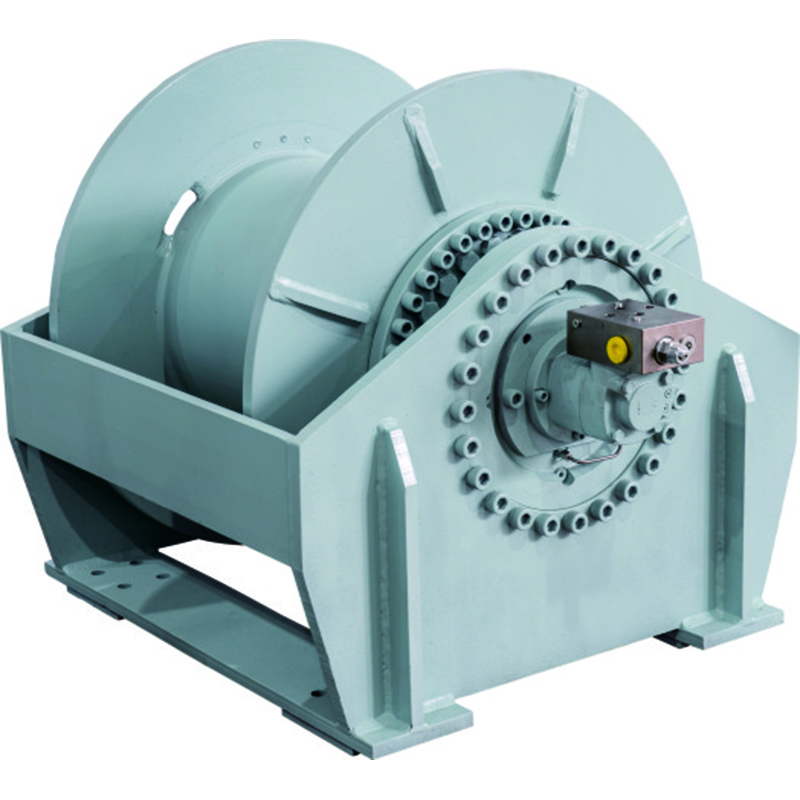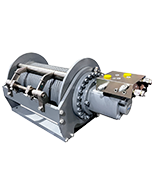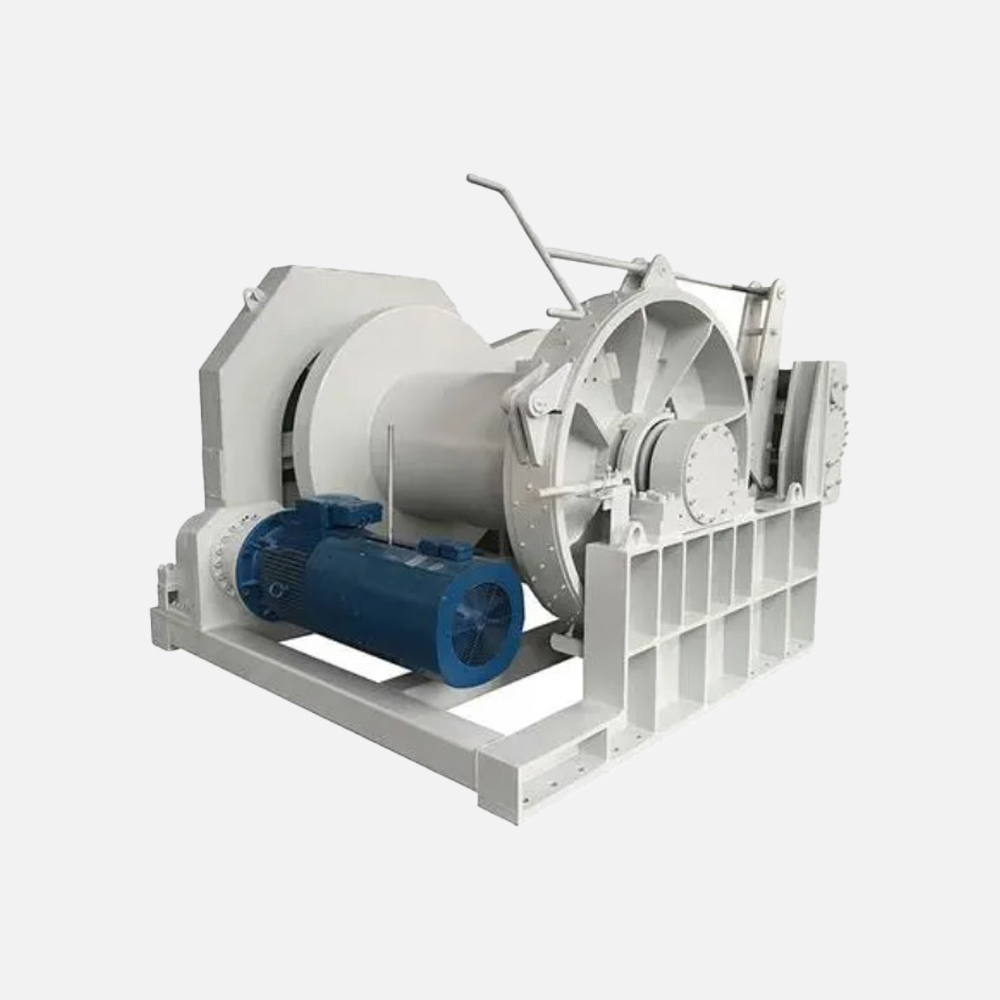Energy-efficient hydraulic winch systems revolutionize operational efficiency. Variable displacement pumps, central to these systems, dynamically adjust fluid flow to match specific tasks. This innovation minimizes energy waste, significantly reducing fuel consumption. For example, the Caterpillar 336EH hydraulic hybrid excavator demonstrates up to 25% fuel savings. In real-world applications, fuel efficiency improvements range from 20% to 48%, depending on the workload. These advancements benefit industries using winches, particularly the mining hydraulic winch for vertical shaft hoisting, by lowering operational costs and environmental impact. Additionally, the integration of a Shell Drive Reducer Planetary Gearbox enhances the performance of hydraulic winch hydraulic windlasses, further optimizing their efficiency in various applications.
Key Takeaways
- Pumps that change flow can cut fuel use by 25%.
- They waste less energy and make less heat, saving money.
- Construction and mining use these pumps to work better and last longer.
Understanding Hydraulic Winch Systems
What Are Hydraulic Winch Systems
Hydraulic winch systems are mechanical devices designed to lift, pull, or move heavy loads using hydraulic power. These systems rely on a hydraulic motor and pump to generate the force required for operation. The hydraulic motor drives the drum, which winds or unwinds the cable or chain to perform lifting or pulling tasks. Industries such as construction, marine, and mining frequently use hydraulic winches due to their high efficiency and ability to handle substantial loads.
The performance of hydraulic winch systems is defined by specific technical metrics. For instance, the lifting rating typically operates at a ratio of 5:1, while the pulling rating functions at 3.5:1. These systems also maintain an operational pressure of 6.3 bar (90 psi), ensuring consistent and reliable performance.
| Metric | Value |
|---|---|
| Lifting Rating | 5:1 |
| Pulling Rating | 3.5:1 |
| Operational Pressure | 6.3 bar (90 psi) |
Common Inefficiencies in Traditional Hydraulic Winch Systems
Traditional hydraulic winch systems often suffer from energy inefficiencies. Fixed displacement pumps, commonly used in older systems, deliver a constant flow of hydraulic fluid regardless of the operational demand. This results in significant energy waste, particularly during low-load operations. Additionally, these systems generate excessive heat, which can lead to increased wear and tear on components, reducing their lifespan.
Market studies highlight the growing demand for more efficient hydraulic winch systems. The global market, valued at USD 1.2 billion in 2024, is projected to reach USD 1.8 billion by 2033, driven by advancements in technology and automation. However, traditional systems face challenges such as compliance with environmental guidelines and competition from alternative lifting solutions.
| Category | Details |
|---|---|
| Market Size | USD 1.2 Billion in 2024, projected to reach USD 1.8 Billion by 2033, with a CAGR of 5.5% from 2026 to 2033. |
| Growth Drivers | Rise in construction activities, technological advancements, and increasing demand for automation. |
| Challenges | Compliance with safety and environmental guidelines, competition from alternative lifting solutions. |
Modern hydraulic winch systems address these inefficiencies by incorporating variable displacement pumps, which optimize energy usage and reduce operational costs.
The Role of Variable Displacement Pumps
How Variable Displacement Pumps Work
Variable displacement pumps operate by adjusting the volume of fluid they displace per revolution. This adjustment is achieved through a mechanism that alters the geometry of the pump’s displacement chamber. Unlike fixed displacement pumps, which deliver a constant flow regardless of demand, variable displacement pumps modify their output based on system requirements. This dynamic adjustment ensures that the pump only supplies the necessary amount of hydraulic fluid, minimizing energy waste.
These pumps often incorporate advanced features such as pressure compensation and load sensing. Pressure compensation allows the pump to maintain a consistent output pressure, even when the system’s demand fluctuates. Load sensing further enhances efficiency by adjusting the flow rate based on the actual workload. For instance, in a hydraulic winch system, the pump can reduce its output during low-load operations, conserving energy and reducing fuel consumption.
Key operational diagrams illustrate the functionality of these pumps. For example:
- Figure 15-12: Demonstrates a variable displacement pump symbol used for speed control without energy waste.
- Figure 15-16: Shows a circuit where the pump controls cylinder speed with minimal heat generation.
- Figure 15-14: Highlights a load-sensing, pressure-compensated pump symbol, emphasizing efficiency in systems with varying flow demands.
Key Differences Between Variable and Fixed Displacement Pumps
Variable displacement pumps differ significantly from their fixed displacement counterparts in terms of design, efficiency, and application. The following table highlights these differences:
| Attribute | Variable Displacement Pumps | Fixed Displacement Pumps |
|---|---|---|
| Energy Efficiency | Adjusts flow to system demand, reducing energy waste. | Operates at full capacity, leading to inefficiencies. |
| Initial Investment Costs | Higher due to complex design and control features. | Lower, with a simpler design and fewer components. |
| Operational Costs | Lower over time due to reduced energy usage and wear. | Higher, as they waste energy and incur more wear. |
| Maintenance Requirements | Requires better fluid quality and filtration. | Simpler maintenance with fewer moving parts. |
| Application Suitability | Ideal for variable flow applications. | Best for constant flow applications. |
These differences make variable displacement pumps a superior choice for applications requiring precise control and energy efficiency. For example, in hydraulic winch systems, variable displacement pumps optimize performance by adjusting flow rates to match the load, ensuring smooth and efficient operation.
Energy Efficiency Advantages of Variable Displacement Pumps
Variable displacement pumps offer unparalleled energy efficiency in hydraulic systems. By supplying only the required output, they minimize energy waste during low-demand periods. This capability is particularly beneficial in industries where hydraulic winches are used, as it reduces fuel consumption and operational costs.
Several studies and technical reports quantify these advantages:
- Energy Saving: These pumps adjust based on system load, leading to better resource management.
- Power Savings: They enhance productivity by providing precise control over high power levels.
- Cost Efficiency: The design reduces both initial and operational costs while achieving precise lubricant control.
The rising demand for energy-efficient hydraulic systems has increased the adoption of variable displacement pumps. These pumps adapt flow rates and pressure according to demand, reducing energy loss. For instance, the MSCM in a loader boom’s hydraulic system achieved a 9.38% reduction in energy consumption compared to a variable-speed fixed displacement power source. It also showed an 11.27% reduction compared to a fixed-speed variable displacement power source.
In hydraulic winch systems, these pumps not only save energy but also enhance overall system performance. By reducing heat generation and wear, they extend the lifespan of components, further lowering maintenance costs. This combination of efficiency and durability makes variable displacement pumps an essential innovation for modern hydraulic systems.
Achieving 25% Fuel Savings in Hydraulic Winch Systems
Mechanisms Behind Fuel Savings
Fuel savings in hydraulic winch systems stem from the integration of variable displacement pumps. These pumps dynamically adjust the flow of hydraulic fluid to match the operational load. By supplying only the required amount of fluid, they eliminate energy waste during low-demand periods. This precise control reduces the workload on the engine, leading to lower fuel consumption.
Another key mechanism involves load-sensing technology. This feature allows the pump to detect the system’s workload and adjust its output accordingly. For example, during light lifting tasks, the pump reduces its flow rate, conserving energy. Conversely, it increases output during heavy-duty operations, ensuring optimal performance without unnecessary fuel usage.
Heat reduction also plays a significant role in fuel efficiency. Traditional hydraulic systems generate excessive heat, which leads to energy loss. Variable displacement pumps minimize heat generation by operating more efficiently. This not only saves fuel but also extends the lifespan of system components, reducing maintenance needs.
Real-World Applications and Case Studies
Industries worldwide have adopted hydraulic winch systems with variable displacement pumps to achieve substantial fuel savings. In the construction sector, these systems power cranes and hoists, where precise control and energy efficiency are critical. Mining operations also benefit, particularly in vertical shaft hoisting, where fuel savings directly impact operational costs.
A notable case study involves a marine hydraulic winch system used for offshore drilling. By replacing fixed displacement pumps with variable ones, the system achieved a 25% reduction in fuel consumption. This improvement translated into significant cost savings and reduced environmental impact, making the operation more sustainable.
Another example comes from the shipping industry. Electric spooling winches equipped with variable displacement pumps enhanced operational efficiency while lowering emissions. These systems demonstrated improved asset utilization, allowing operators to complete tasks faster and with less energy.
Additional Benefits Beyond Fuel Savings
The advantages of variable displacement pumps extend beyond fuel efficiency. These systems contribute to lower emissions, aligning with global efforts to reduce environmental impact. For instance, reciprocating engines equipped with these pumps produce 30% fewer emissions compared to traditional setups.
Operational efficiency also improves significantly. Electric fracturing systems, which incorporate variable displacement pumps, maximize efficiency gains for customers. This technology eliminates the need for diesel, further reducing fuel costs and emissions.
Maintenance costs decrease as well. Without the need to change oil, filters, or hoses frequently, operators save both time and money. Electric solutions, such as electric spooling winches, enhance sustainability by reducing wear and tear on components. This leads to longer equipment lifespans and fewer replacements.
| Benefit Type | Description |
|---|---|
| Emissions Reduction | 30% lower emissions using reciprocating engines. |
| Fuel Cost Savings | Significant cost savings by eliminating diesel. |
| Efficiency Gains | Maximizes efficiency gains for customers through electric fracturing. |
In addition, improved asset utilization and operational efficiencies contribute to customer emissions reduction. These benefits make hydraulic winch systems with variable displacement pumps a valuable investment for industries seeking to enhance sustainability and reduce costs.
Variable displacement pumps revolutionize hydraulic winch systems by optimizing energy usage. This innovation delivers 25% fuel savings, significantly reducing operational costs and emissions. Industries adopting this technology benefit from enhanced sustainability and improved efficiency. By integrating these advanced systems, businesses can achieve long-term economic and environmental gains.
FAQ
What industries benefit the most from hydraulic winch systems with variable displacement pumps?
Industries like construction, marine, and mining gain the most. These sectors require energy-efficient systems for heavy lifting, pulling, and hoisting operations.
How do variable displacement pumps reduce operational costs?
They minimize energy waste by adjusting fluid flow to match demand. This reduces fuel consumption, heat generation, and wear, leading to lower maintenance expenses.
Are variable displacement pumps environmentally friendly?
Yes! These pumps reduce emissions by optimizing energy usage. Their efficiency aligns with global sustainability goals, making them an eco-friendly choice for hydraulic systems.
Post time: Apr-15-2025



